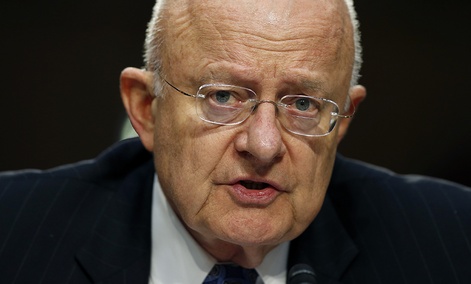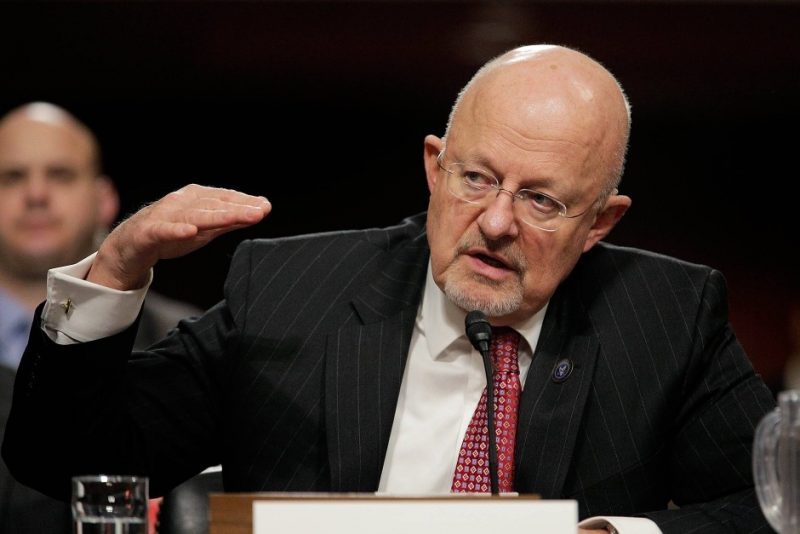
I almost died in North Korea, once, and I don’t mean during my diplomatic trip in 2014 to free two Americans imprisoned there.
It was 1985, and I was the chief of intelligence for United States forces in South Korea. I was in a helicopter, on my way to check out what we suspected was a North Korean tunnel, when I heard a sound like popcorn popping and saw white puffs below us.
This was followed by a loud alert in my earphones — “Red dog fox! — indicating someone had crossed the Demilitarized Zone. That someone was us.
After some evasive maneuvering, our pilot returned us to South Korean airspace and then home. A few days later a nervous South Korean commander showed up to apologize for an M-60 machine gun round that had struck our main rotor. The commander explained that South Korean troops assumed any aircraft flying north was defecting.
We’d taken fire from both the North and South, and the South Koreans were better shots.
Most days were not that adventurous. I had been asked by the United States forces commander to provide him with 48 hours of “unambiguous warning” ahead of a North Korean invasion, so that he could evacuate all American dependents and prepare to defend the peninsula.
It took me almost a year of study to decide that his demand was impossible to meet. I finally told him that the first unambiguous indication of an attack would be artillery shells falling on Seoul.
While the United States and North Korea had never signed a peace treaty, I didn’t believe the North Korean leader had any intention of breaking the 1953 cease-fire. Any attack would more likely be the result of some small incident spiraling out of control.
If the North Korean military saw some provocation as the start of an invasion, it would respond accordingly. This would not be the last uncomfortable truth about North Korea I would have to tell a senior leader.
As control of the regime passed from Kim Il-sung to Kim Jong-il to Kim Jong-un, my assessment of the threat posed by the Hermit Kingdom never changed. The “Dear Leaders” didn’t want a fight but kept the mechanics of war set on a hair trigger, and any sane policy on North Korea needed to respect that dynamic.
There is a sacred writ of intelligence officers never to get involved in creating policy. Our job is to present unbiased facts to reduce uncertainty for decision makers, whether they’re in the Oval Office, at the negotiating table or on the battlefield.
As director of national intelligence under President Barack Obama, I was careful not to advocate specific policies in National Security Council meetings. But I told President Obama in private that our stance on North Korea was flawed.
Our policy was never to discuss what the United States might do for the North Korean government until it first agreed to give up its nuclear ambitions. That was a dead end, I told him, and merely ensured that no progress would be made.
I had not fully appreciated the consuming siege mentality that pervades North Korea until I visited and engaged directly with senior officials there in November 2014. They work hard to perpetuate the belief that Americans are always on the brink of invading and that nuclear weapons are their only chance of survival.
Neither they nor we really know whether their weapons would work, but in many ways, it doesn’t matter. We have to assume that if they do launch an intercontinental ballistic missile, it will reach our shores and detonate.
Thus, without even proving they have the capability, they’ve created nuclear deterrence.
I believe, and I told President Obama, that North Korea won’t budge on its nuclear program because they see us as an existential threat. If we’re to make a breakthrough, we need to consider capitalizing on our biggest strengths: openness and information, even if we don’t take nuclear weapons off the table.
Today, the situation in North Korea seems poised for change — whether for better or for worse remains to be seen.
In the first year of Donald Trump’s administration, while he and Kim Jong-un traded taunts, the North Koreans successfully tested increasingly powerful ballistic missiles and a thermonuclear weapon.
But then, in March, a South Korean envoy in Washington informed President Trump that Mr. Kim was willing to discuss giving up North Korea’s nuclear program. Surprising everyone, Mr. Trump accepted the invitation to talk.
I have not found myself giving Mr. Trump much in the way of public kudos on his personal or policy choices, but his decision to meet with Mr. Kim could mark a courageous step forward for the de-escalation of tensions on the peninsula. (Unfortunately, it’s far from certain the talks will happen, given North Korea’s threat last week to pull out.)
North Korea survives because it fosters isolation. Outside the ruling clique, there is great interest in the outside world, but we have limited means to satisfy North Koreans’ hunger for information.
We should set aside for a minute our demand that they disarm before any other negotiation.
We should meet their demand to sign a peace treaty, and establish a physical presence in Pyongyang, an office staffed by Americans who can interact with North Korean citizens.
We could model it on the “interests section” we maintained in Havana for decades.
It would not be a reward for bad behavior, but an opportunity for access, which would enhance our understanding and enable the flow of information from the rest of the world.
We would, of course, reciprocate by allowing North Korea to establish a similar mission in Washington. I don’t think this would represent a huge leap over its presence now at the United Nations in New York.
Eventually, we would hope to offer a road map to withdrawing many of our forces from the peninsula, while the North Koreans reduced the forces they have along the DMZ, including the artillery and rocketry forces that are poised to fire on Seoul.

If we can figure out a way to lead North Korea’s leaders to a place where they don’t feel so threatened, we could move away from the cusp of a cataclysmic war. All of this would benefit us, whether we eliminated their nuclear capacity or not.
When I traveled to North Korea in 2014, my primary interlocutor spewed anti-American vitriol at me over several car rides and through an elaborate 13-course meal. He refused to consider anything I said and typically talked — or yelled — over me when I interjected.
That was true with just one exception.
I told him, “The United States has no permanent enemies.” I cited Germany and Japan as examples of how bitter adversaries can become allies. I described a recent trip to Vietnam and pointed out that the United States has developed productive diplomatic, economic and even military relations with its government.
I suggested the same could happen with North Korea.
We ate in silence for a few minutes before he remarked that I could foster that transformation by negotiating the normalization of relations.
I returned to Washington’s talking point No. 1: no negotiations until North Korea denuclearizes. And then we resumed talking past each other.
Both sides are stuck on a narrative, and only the bigger partner can change it. Unfortunately, I don’t think we’ve positioned ourselves — either philosophically or bureaucratically — to achieve that change.
But I sincerely hope our president will surprise me.
James Clapper, the director of national intelligence from 2010 to 2017, is the author of the forthcoming book Facts and Fears: Hard Truths From a Life in Intelligence, from which this essay was adapted.
This article was originally published by The New York Times
The 21st Century
